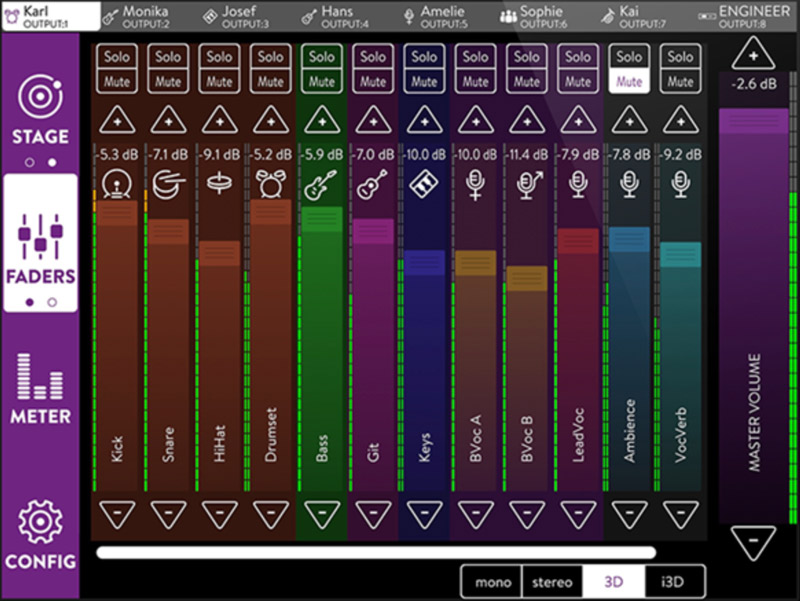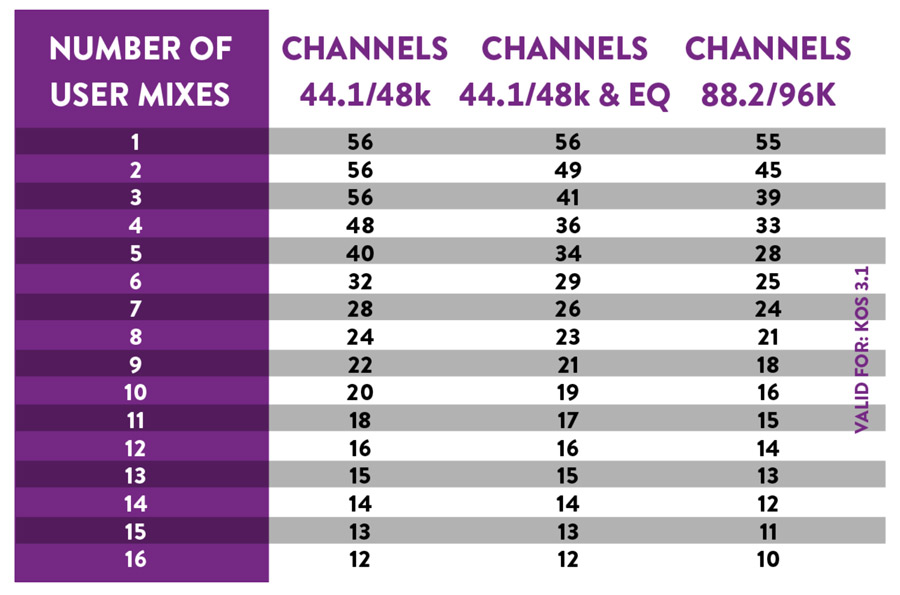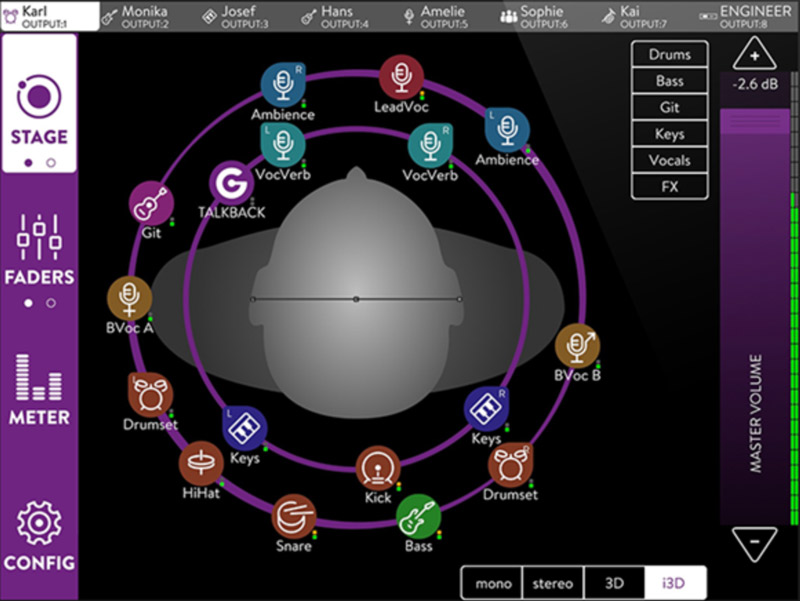This paper is available in Français too
Klang:technologies, German creator of world first binaural encoding and mixing system for ear-monitoring systems, has introduced it to the french market during the DV2 distributorship deal presentation at JTSE 2018 exhibition in Paris. Extensive test report below.
New french distributor DV2, founded 1997 by Didier Dal Fitto and Guy Vignet, is based in Metz and has already in its prestigious portfolio such brands as Adamson, DiGiCo, Digigrid, or Wavecapture. Klang felt they could be the right team for its own products. Seminars and presentations to follow soon all over french most professional touring companies.
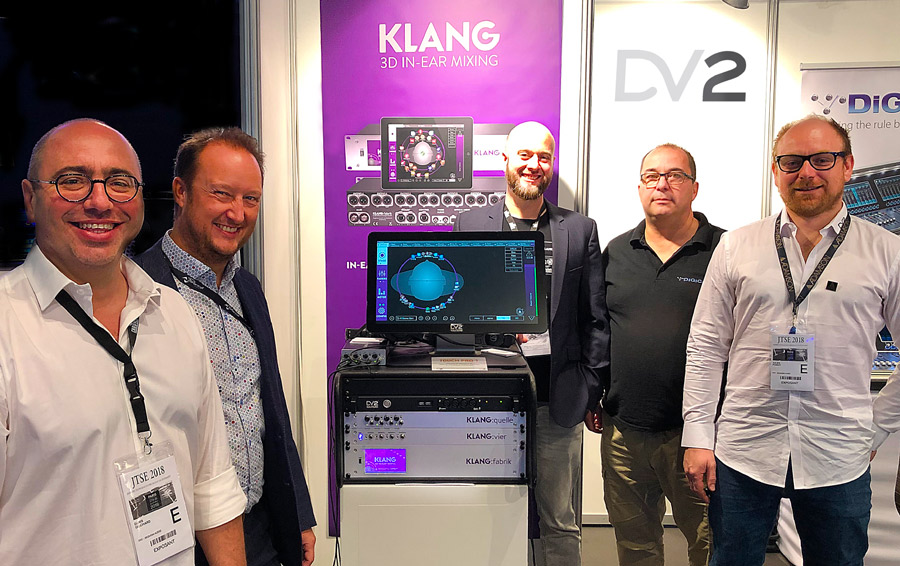
Listening test
We’ve had the opportunity to test and listen to the system, and went through a discussion with Phil Kamp who, aside from being a good salesman, is a true sound guy by heart and by trade.The listening tests were made from a quite good quality multitrack recording, with enough tracks to allow me to put musical “objects” into the soundscape, and adjusting their levels.
As the processing power is not limitless, the heart of the system is clocked at 44/48 kHz or 88.2/96 kHz and knows how to generate a variable output mixes, this number also influences the available channels count per mix. On this matter, it does accept Dante, MADI (w/optional card), and ADAT, all delivered on their outputs at the same time, plus 8 stereo analog outputs.
Taking a look at these easy to read graphics on the left, taken out from the minimalist manual, makes you understand how the global resources are allocated, and could guide you to the best way to actually use the system, either with stems only, or with all bells and whistles, as you please guv’nor !
The working process is very intuitive. Just drag’n’drop each object on the software screen, either in mono upon the center of the head symbol, or in stereo far from it on a horizontal line, or in 3D at will anywhere in 360° on the screen. On the image below, all the sources are spacialized.
Let’s (h)ear this!
At first, listening does sound confusing, and I would advise you to start from mono placements, not directly in 3D, and then gently opening the stereo soundscape with overheads, guitars, keys, surround sounds, FX, backing vocals, toms, percussion, while keeping kick, snare, bass and lead vocals in the center.
Once you’re more comfortable with it and start to “understand the Klang sound” and the way not to have the sources to get fussy once blended together, thus sounding a bit different, try to put the snare drum upwards slightly, along with a little bit of bass, and try to fiddle with the lead vox, for instance. The effect starts being interesting that way. Then switch to stereo and mono before going to 3D, some buttons allow this. Truly enough, it then becomes more airy, without losing precision nor attack.
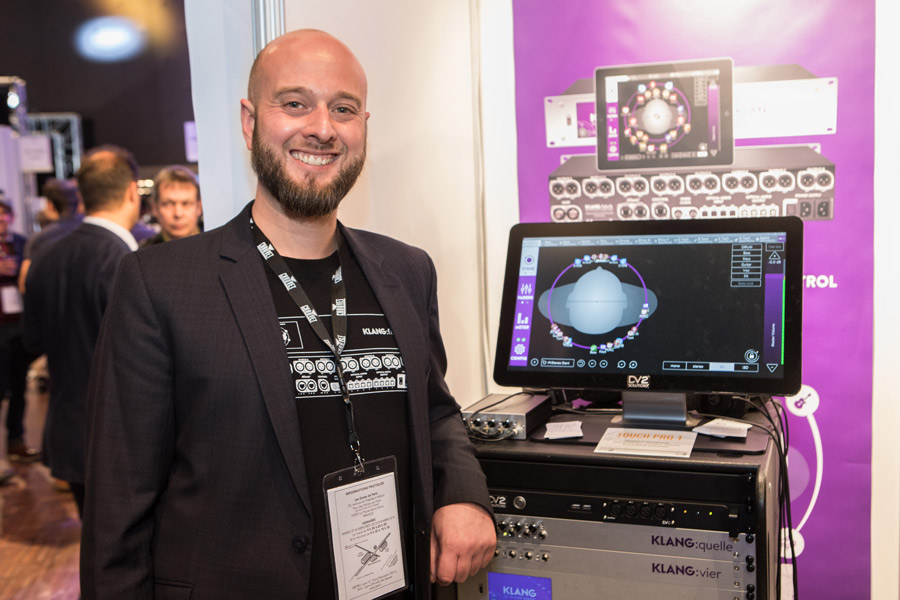
Not any ugly artifact to report either, just an odd feeling this is not your ordinary sound, disturbing at first for your artists as well as for you … but this can also be very funny and creative, bringing a new soundscape and a more important separation to each instrument.
While playing -with subtlety please- as with any item of this type, the contribution is interesting and could appeal to performers. As a matter of fact, you’ll have to prepare your mix upfront listening thru the matrix to adjust each source and EQ it according to what the Klang:fabrik finally delivers.
Whole different game
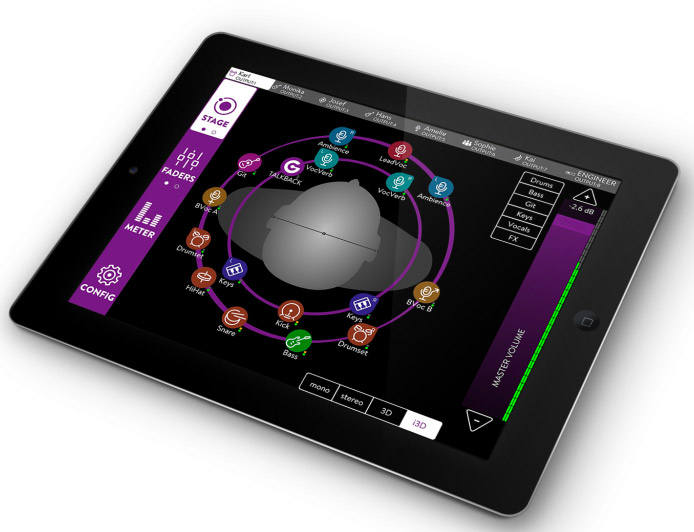
Electronically speaking, nothing changes between stereo and 3D, but acoustically it is a whole different game, and you’ll have to change your way of placing each of your monitor output.
You’ll have to consider the 3 msec latency as well, of course the same for each of the channels, even for the ones routed to central mono. Then, if you go for 96 kHz and a lot of mixes, you’ll have to choose who’s gonna feel more at ease with his own mix on the stage set, or cascade two units (available since version 3.1), or work with stems.
Conclusion
Compared at very similar price to a whole rack of analog enhancers (named V….R), the Klang:fabrik is a lot of fun to play with, especially since there are not many new toys around these days. Another strong point is the possibility given to some musicians to deal with their own mix and spacial soundscape, like a more powerful and funnier Aviom.
Beware we couldn’t test this through a UHF link, but wired out of the matrix directly to an EM2Pro. Take an appointment with your local distributor for a real-life demo with your own sources, or ask them for a loan test, and if you ever scroll through Klang website, don’t bother with their Youtube video. The sound, phase coherence and the overall impression you’ll get from this movie about this binaural matrix can’t emulate at all what you’ll hear in a live demo.
Last but not least…
Breaking news : Klang announces the :vektor. This could be funny indeed, as this newbie is a tracker designed to let you hear what your eyes are actually looking at when you turn or move your head.
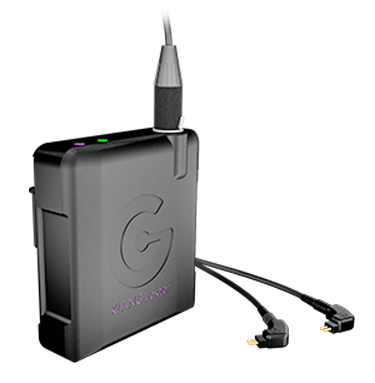
:vektor is either a beltpack interconnect between your usual ear-monitors receiver and your earphones, or a tiny module sticked to your earphones. More about this when we see (and hear !) it in full details, presumably on Prolight & Sound Frankfurt in a few months’time.
What seems now pretty sure is that, is a near future, some stage artists will carry on their back (or waist): a mic emitter, a ear-monitor receiver, a tracking unit for FOH immersive sound, another receiver (:Klang or else) for 3D, and a very last one for the followspots tracking ;0)
Instead of hearing loss, lead singers of the next decade might suffer from scoliosis …
More information on Klang:technologies website




